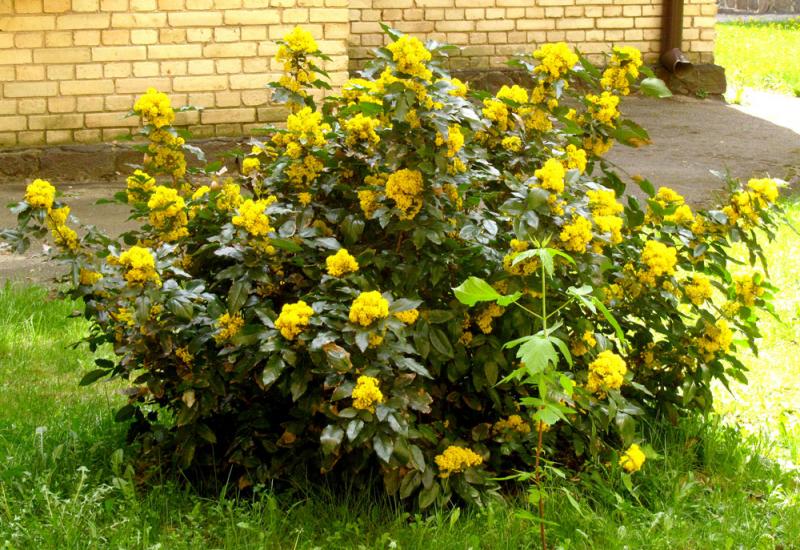“Kyiv polytechnic” already told about beautiful decorative bush of barberries growing near rector’s wing. But here, close to the entrance to “Alma-mater” café its dimwitted cousin is situated – Magonia padybolysta (Mahonia Agguifolium Nutt.) or American barberries, or Oregon grape.
It belongs to the family of barberries (Berberidaceae), name owes Bernard M'Mahon – gardener and the author of one of the first American garden calendar , published in 1806.
Family counts about 70 species of evergreen bushes from forest and mountain regions in Himalaya, East Asia, North and Central America.
Mahonia has brilliant curved-gear dark green leaves, similar to ilex leaves, that is why it named Mahonia. In the spring, it especially beautiful due to golden leaves appeared, which are gathered in clusters combined with relief leaves.
This honey plant prefers growing in shadow places with calcareous soils. It has a feature to recover fast after frost, resistant to diseases and insects. In autumn it is attracted be dark-blue edible berries.
Mahonia’s bearing are capable for processing and food. They contain sugars, organic acids, tannins and pectin, ascorbic acid. Fresh berries can be perfectly preserved. You may use them as addition to compote, juice, wine, jam and confectionary. Plant serves as a shelter for birds, gives nectar to bees and food to small animals. It is also popular in landscape design.
Be the way, everyone drew attention, who passed the monument of dead polytechnics. Saturated emerald in summer and purple-violet in autumn – its colour highlight the solemnity and sorrow of the sculptures.

